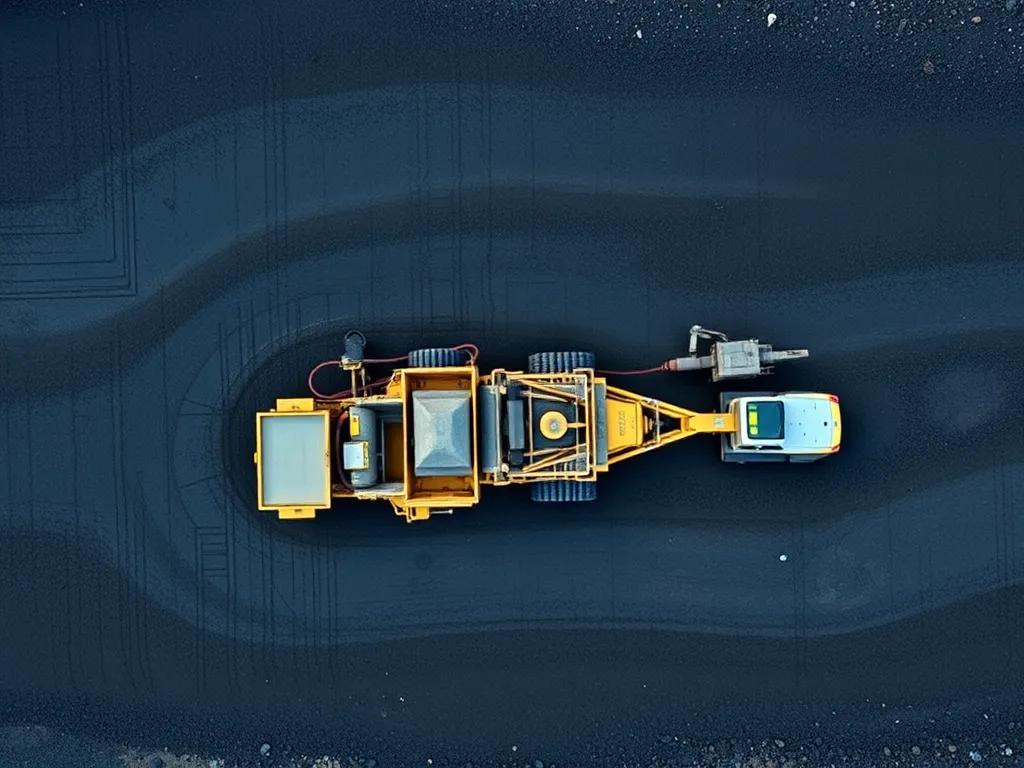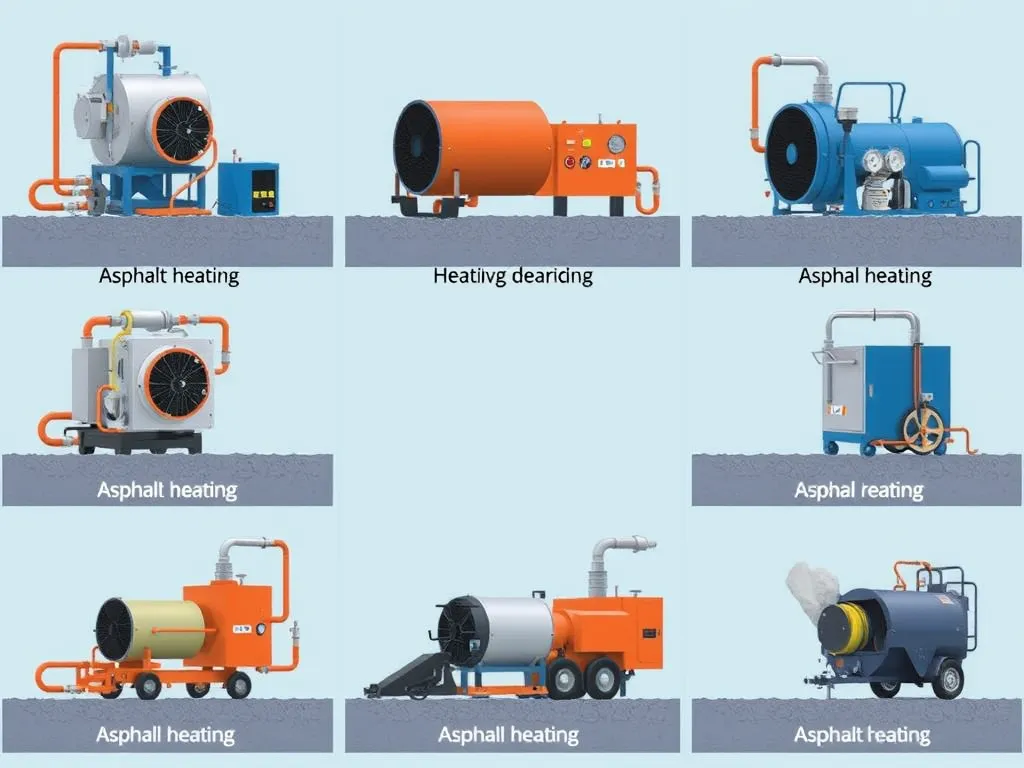Benefits Of Regular Asphalt Inspections: Save Money and Extend Pavement Life
Published on: August 22, 2025 | Last Updated: April 14, 2025
Written By: George Voss
Regular asphalt inspections help property owners save money, maintain safe surfaces, and extend pavement life by catching small issues early. These inspections evaluate cracks, drainage problems, and surface wear—similar to routine car maintenance that prevents engine failure. Addressing a 1-inch crack quickly costs $2-$5 per linear foot, while ignoring it may require full-depth repairs at $25-$50 per square foot later. Proactive checks also reduce slip hazards, improve traction, and keep asphalt functional for 20-30 years.
This article breaks down how consistent inspections protect your asphalt investment. Learn how infrared scanning spots hidden weaknesses, why sealcoating every 3-5 years prevents oxidation, and how LiDAR mapping detects thickness variations. We’ll show real cost comparisons, safety upgrades like improving skid resistance, and methods to prevent sublayer erosion. Whether managing parking lots, driveways, or roads, these strategies cut long-term costs by 30-60% while maintaining ADA compliance and reducing environmental impact.
Contents
- Cost Savings Through Proactive Asphalt Maintenance
- Enhanced Safety for Pedestrians and Vehicles
- Prolonging Asphalt Lifespan and Performance
- Optimizing Asphalt Maintenance Strategies With Data
- Environmental Benefits Of Regular Asphalt Inspections
- Asphalt Inspection FAQs
- Closing Thoughts
- Additional Resources for You:
Cost Savings Through Proactive Asphalt Maintenance
Regular asphalt inspections cut costs by spotting issues before they grow. Fixing minor flaws early avoids big bills later. This keeps roads strong and budgets intact.
Early Detection Of Minor Asphalt Damage
Inspectors check for early signs like hairline cracks or raveling. These small problems cost less to fix when caught fast.
Preventing Small Cracks from Becoming Major Repairs
A 1/4-inch crack can expand quickly under traffic and weather. Sealcoating these gaps costs $2 per sq.ft. versus $10+ for full-depth patching later.
Reducing Long-Term Asphalt Repair Expenses
Routine checks lower lifetime costs by 40%. For a 10,000 sq.ft. lot, this saves $8,000 over 15 years by avoiding rebuilds.
Accurate Budget Planning for Asphalt Maintenance
Inspections create clear repair timelines. This lets owners plan funds instead of facing surprise costs.
Predictive Cost Plans for Asphalt Repairs
Data from checks helps forecast 5-10 year costs. A parking lot may need $1,200 in sealcoating next year and $5,000 for overlays in year six.
Avoiding Urgent Asphalt Repair Budget Overruns
Unplanned fixes cost 30% more than scheduled work. Inspections prevent pothole crises that add $500-$1,000 per incident.
Regular checks not only save money but also pave the way for safer surfaces.
Enhanced Safety for Pedestrians and Vehicles
Regular asphalt inspections directly improve safety by catching hidden dangers before they escalate. Engineers and facility managers use these assessments to spot structural weaknesses affecting vehicle control and pedestrian stability.
Identifying Hazardous Asphalt Conditions
Inspections flag critical issues like potholes, alligator cracks, and raveling. Left unchecked, these defects increase accident risks – a 2″ pothole can damage suspensions at 35 mph, while uneven surfaces cause 17% of pedestrian trips.
Mitigating Risks from Potholes and Surface Degradation
Proactive repairs eliminate hazards:
- Seal cracks under 0.25″ wide to prevent water infiltration
- Fill potholes within 72 hours of detection
- Replace sections with >10% surface deterioration
This approach reduces collision claims by up to 34% according to Federal Highway Administration data.
Improving Traction and Drainage in Asphalt Surfaces
Inspections verify proper cross-slope (1.5-2% minimum) and friction levels. Technicians measure skid resistance using ASTM E274 methods – maintaining a skid number above 35 prevents hydroplaning. Drainage checks ensure water clears within 15 minutes post-rainfall.
Preventing Liability Issues With Timely Repairs
Unaddressed asphalt defects account for 22% of premises liability lawsuits. Routine inspections create repair logs that demonstrate ADA compliance and OSHA standards adherence, shielding organizations from negligence claims.
Addressing Compliance and Safety Standards
Inspectors verify:
- ADA-compliant slopes (≤1:12 ratio)
- Surface smoothness (≤0.25″ elevation changes)
- Proper striping contrast for low-vision pedestrians
Meeting these benchmarks avoids fines up to $75,000 for first-time ADA violations.
By maintaining defect-free pavements, organizations protect users while optimizing infrastructure performance. Next, we’ll examine how strategic inspections preserve asphalt integrity over decades.

Prolonging Asphalt Lifespan and Performance
Routine asphalt maintenance inspections allow for smart timing of vital preservation tasks. This approach maintains structural integrity while adding 5-15 years to pavement service life through data-driven action.
Optimizing Sealcoating and Crack Sealing Schedules
Asphalt pavement inspections pinpoint oxidation levels using visual grading scales (0-100% binder loss). This data sets optimal intervals for applying coal-tar or asphalt-based sealants – typically 24-36 months for parking lots. Crack width tracking with digital calipers dictates when joints need hot-rubberized filler before reaching 0.25″ thresholds.
Extending Pavement Durability Through Timely Maintenance
Applying sealcoat within 48 hours of crack repairs creates a 70% stronger bond than delayed applications. PG 64-22 binders in northern climates withstand thermal cycling better when maintenance follows inspection-driven timelines. Pavements receiving clockwork care last 22 years on average vs 14 years for reactive fixes.
Minimizing Structural Damage to Asphalt Layers
Blacktop inspections benefits include catching surface flaws before they impact lower strata. A 0.5″ raveling zone spotted early prevents full-depth failures saving $18-$24 per sq yd in base reconstruction costs.
Preventing Subbase Erosion and Surface Deformation
Annual checks cut subbase washout risks by 40% through prompt crack sealing. Falling Weight Deflectometer (FWD) tests during inspections map load-transfer capacity – key for stopping rutting in high-traffic zones. Addressing just 3% of total surface area annually maintains 92% of original pavement strength.
Moving beyond physical preservation, asphalt maintenance inspections generate critical data for long-term planning…
Also See: Can Asphalt Be Recycled? Learn About the Benefits
Optimizing Asphalt Maintenance Strategies With Data
Data-driven approaches transform how teams manage asphalt surfaces. By analyzing inspection results over time, maintenance crews identify patterns, allocate resources efficiently, and prioritize high-impact repairs. This method cuts guesswork while extending pavement life by 30-50% compared to reactive fixes.
Advanced Asphalt Inspection Methods
Modern techniques combine traditional practices with cutting-edge tools to assess pavement health. These methods detect both visible wear and hidden structural flaws.
Visual Inspections for Surface-Level Asphalt Issues
Trained inspectors spot early signs of distress like alligator cracking, raveling, or edge breaks. Documenting these issues through photo logs or digital maps creates a baseline for tracking degradation rates. Addressing surface flaws during initial stages prevents water infiltration – a primary cause of subbase failures.
Thermal Imaging to Detect Subsurface Weaknesses
Infrared thermography cameras map temperature variations across asphalt surfaces. Areas with trapped moisture or voids show distinct thermal signatures, revealing problems like delamination or base layer erosion. This non-destructive method pinpoints trouble spots needing core sampling or ground-penetrating radar follow-ups.
Leveraging Technology for Efficient Inspections
Automated systems collect precise data faster than manual methods, slashing inspection times by 60%. Integrated software platforms generate real-time reports for immediate action plans.
Employing LiDAR for Precision Asphalt Thickness Measurements
Light Detection and Ranging (LiDAR) systems mounted on vehicles scan pavements at highway speeds, capturing thickness data accurate to ±1mm. This reveals uneven wear patterns and helps calculate remaining service life. Contractors apply this intel to plan targeted overlays, avoiding full-depth replacements until absolutely necessary.
These tech-forward strategies set the stage for examining how regular inspections contribute to eco-conscious paving practices…

Environmental Benefits Of Regular Asphalt Inspections
Routine asphalt maintenance inspections protect more than pavement—they safeguard ecosystems. By catching degradation early, inspectors slash material waste and block pollutants from harming soil and waterways. These practices align with modern sustainability goals while preserving infrastructure integrity.
Reducing Material Waste Through Timely Repairs
Inspections spot raveling edges and hairline cracks before they expand. Fixing 6-inch cracks costs 83% less than replacing entire sections later. Recycling reclaimed asphalt pavement (RAP) in repairs cuts virgin aggregate use by 40%, with 90 million tons reused annually in US roads. This reduces quarrying demands and landfill contributions from full-depth replacements.
Minimizing Chemical Runoff From Degraded Asphalt
Compromised asphalt lets motor oil, antifreeze, and road salts seep into groundwater. A single 10-foot pothole can channel 50 gallons of contaminated stormwater yearly. Sealcoating cracked surfaces after inspections blocks 74% of hydrocarbon infiltration, protecting aquatic habitats. Regular infrared patching also seals subsurface voids that trap de-icing chemicals.
Data-driven asphalt maintenance inspections create ripple effects beyond pavement preservation. Let’s examine how modern inspection technologies elevate these strategies further.
Asphalt Inspection FAQs
What Are the Signs That My Asphalt Needs Inspection?
Typical signs that indicate your asphalt may need inspection include visible cracks, potholes, fading surface color, water pooling, or uneven surfaces. Early inspection can help prevent further damage and costly repairs.
How Often Should Asphalt Inspections Be Conducted?
It’s recommended to conduct asphalt inspections at least once a year. However, properties that experience heavy traffic or harsh weather conditions may benefit from bi-annual inspections to catch potential issues early.
Can I Perform an Asphalt Inspection Myself?
While property owners can look for obvious signs of distress, professional inspections utilize specialized tools and expertise to accurately assess the condition and underlying issues of asphalt, offering a more comprehensive evaluation.
What Should I Expect During an Asphalt Inspection?
During an asphalt inspection, professionals will assess the surface for cracks, potholes, and signs of wear. They might use thermal imaging or other technologies to check for subsurface problems and provide recommendations for repairs or maintenance schedules.
How Can Regular Asphalt Inspections Affect My Property Value?
Regular inspections and the consequent maintenance can enhance your property’s value by ensuring its aesthetics and functionality, appealing to prospective buyers or tenants who appreciate well-maintained surfaces.
Do Asphalt Inspections Help the Environment?
Yes, regular inspections can minimize environmental impact by reducing the need for major repair work, which often results in material waste and pollutant runoff. Timely repairs help maintain asphalt integrity, promoting sustainability practices.
What is the Cost Of a Professional Asphalt Inspection?
The cost of a professional asphalt inspection can vary based on location, size of the area, and the complexity of the analysis. On average, property owners can expect to pay between $200 to $500 for a comprehensive inspection, which is a small price compared to the savings from early detection of issues.

Closing Thoughts
Regular asphalt inspections play a pivotal role in maintaining the integrity of pavement surfaces. They offer significant cost savings by identifying minor issues before they escalate into major repairs. This proactive approach not only protects your budget but also enhances safety for both pedestrians and vehicles by addressing hazardous conditions swiftly.
Moreover, these inspections extend the lifespan of asphalt by optimizing maintenance schedules and minimizing structural damage. By leveraging advanced inspection techniques and data-driven strategies, property owners can ensure their asphalt remains in optimal condition.
In addition to financial and safety advantages, regular inspections contribute to environmental sustainability by reducing material waste and minimizing chemical runoff. By caring for your asphalt, you invest in its longevity and functionality.
For more information on asphalt maintenance and inspection services, check out Asphalt Calculator USA.
Additional Resources for You:
- Huang, Y. H. (2004). Pavement Analysis and Design (2nd ed.). Upper Saddle River, NJ: Pearson/Prentice Hall.
- The Role of Drainage in Preventing Asphalt Damage & Potholes
- Paving Inspector Certification (PIC) – Asphalt Institute
- The Importance of Sub-grade Inspection Before Asphalt Paving: Avoiding Costly Mistakes
- How Often Should You Repair Asphalt? | Tates Creek Paving


